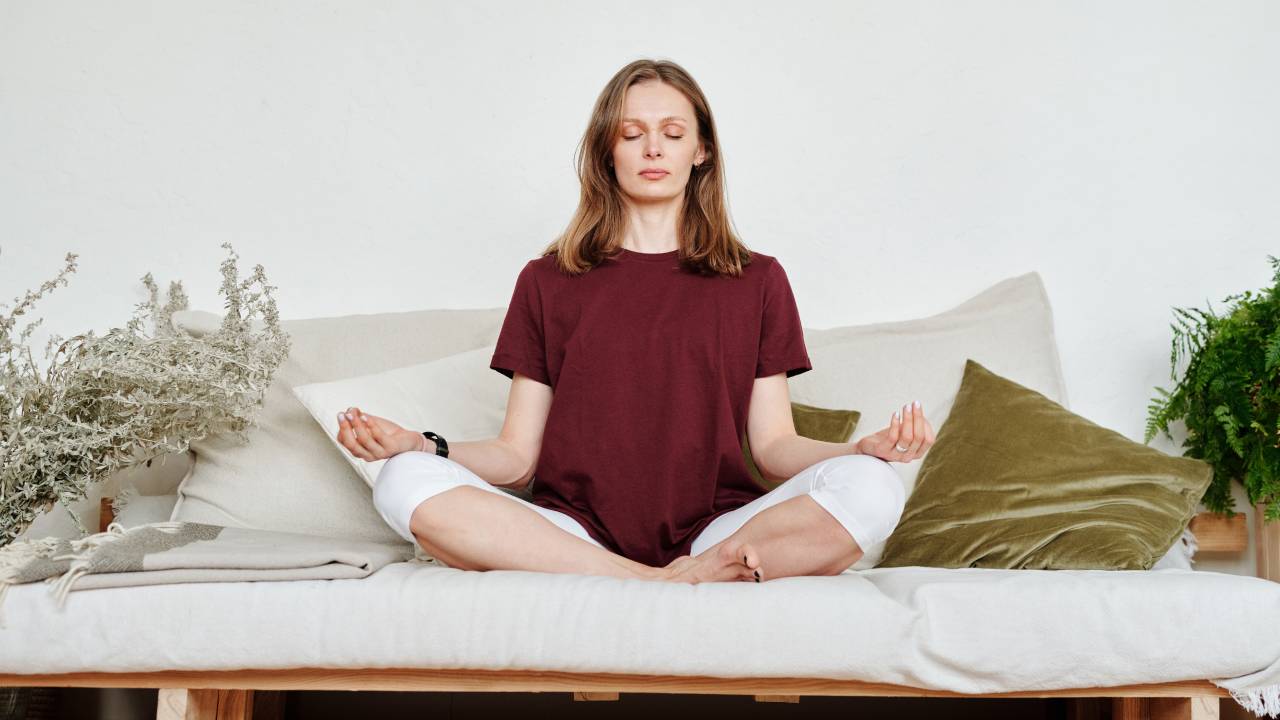
When we feel our energy is flagging and our mood is low, yoga can help shift our perspective by getting our body moving and breath flowing in sync with movement. This can lead to higher energy levels, a less muddled mind, controlled emotions and a general sense of wellbeing.
Yoga, unlike other forms of exercise, is gentle and leaves plenty of time for you to be fully present with what's going on in your body and mind as you practice. This is the key to the shift in mood you may experience after a yoga session. After a yoga practice on the best yoga mat, you feel like a different person. You can see things clearly whereas before you may have been stuck in a rut with your thoughts.
There are two ways to improve your low mood with yoga. One is to do a hard, fiery practice to get the blood pumping and the other is to go slow and turn inwards to feel and acknowledge what's going on for you. We’ll do a bit of both in this sequence. Try this simple 6-pose yoga routine to see if it can improve your low mood.
1. Wide legged child’s pose
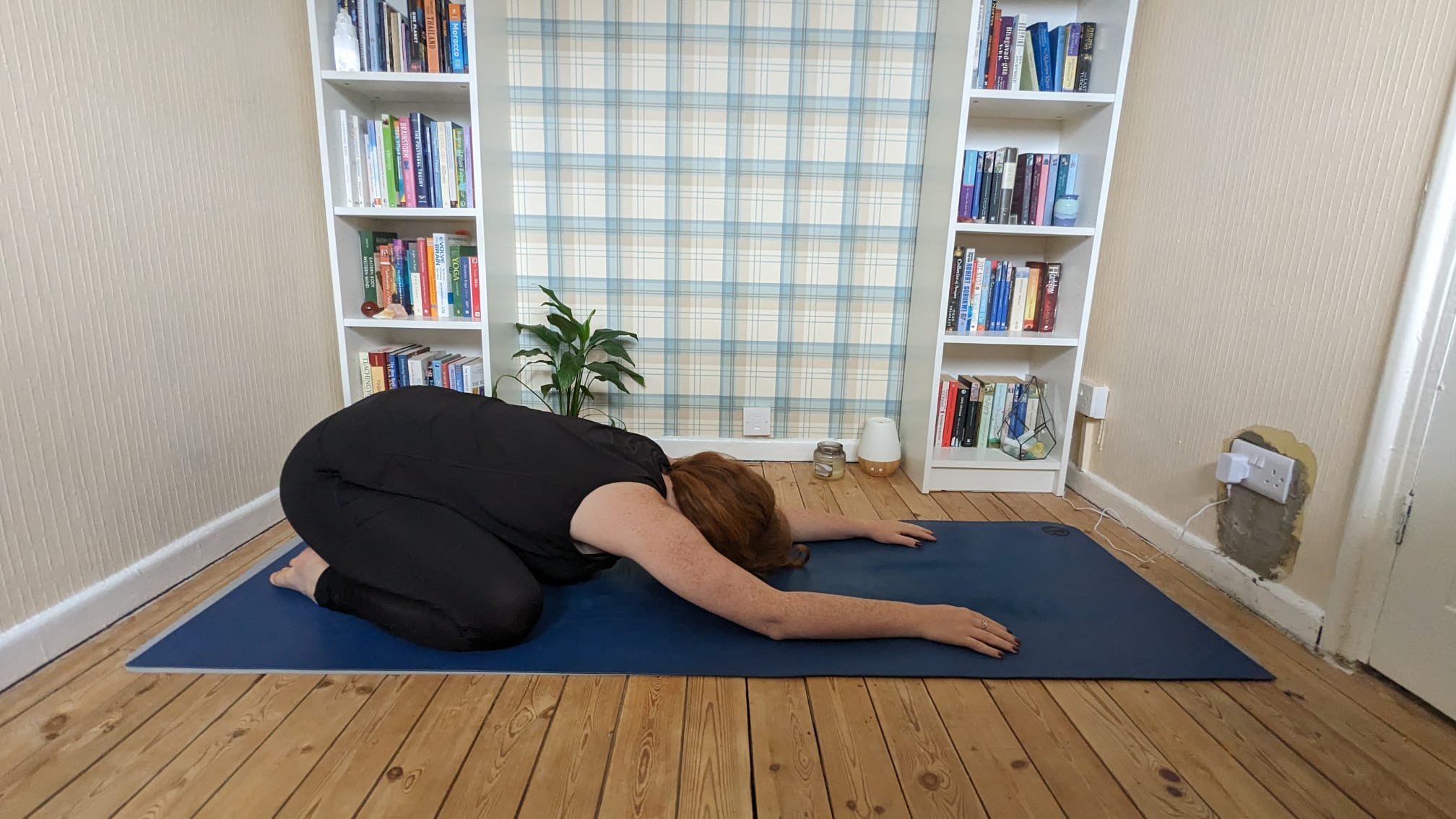
Wide legged child’s pose is a great way to start a yoga practice, allowing you to turn inwards away from external distractions. It's a safe posture as you're folded into yourself and can be comforting when our mood makes us feel vulnerable.
Step 1: Sit back on your heels, or as close to that as you can manage.
Step 2: Separate your knees as wide as is comfortable for you, ensuring there's enough space between the thighs for your upper body.
Step 3: Inhale and on an exhale, stretch forward placing your ribcage between your inner thighs. Extend the arms forward or make a pillow with your hands. Do whatever feels more suitable for your shoulders.
Sign up to the T3 newsletter for smarter living straight to your inbox
Get all the latest news, reviews, deals and buying guides on gorgeous tech, home and active products from the T3 experts
Step 4: You can place your right cheek to the floor or the back of your hands. Stay here for one minute before turning your head to the other side and holding for a further minute before releasing.
2. Twisted lunges
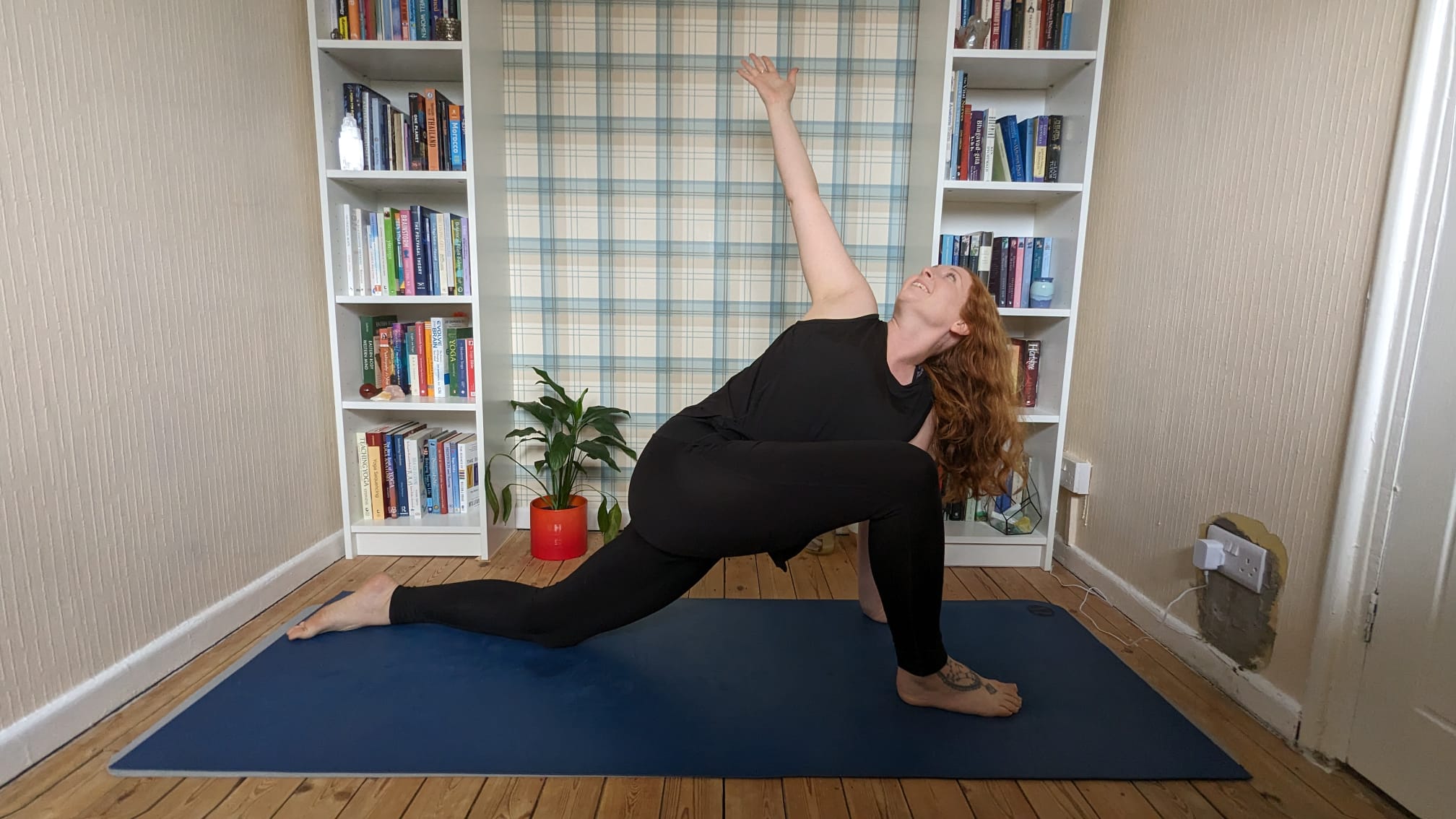
Twisted lunges help to energise and wake us up. They also provide a hip release and stretch to the lower abdomen that can help with creating a calming and deep breath which can boost mood. Longer, deeper breaths help to restore our nervous system.
Step 1: Come into a lunge position with your right foot forward, between your hands.
Step 2: Place your left hand on the floor beside your right foot. Inhale and lift your right hand up.
Step 3: Keep reaching up with your right hand and twist to the left, opening the chest.
Step 4: Stay for a few deep breaths before changing sides. Stepping your left foot forward and placing your right hand on the floor, lifting the left hand to the ceiling into the twist.
3. Pigeon pose
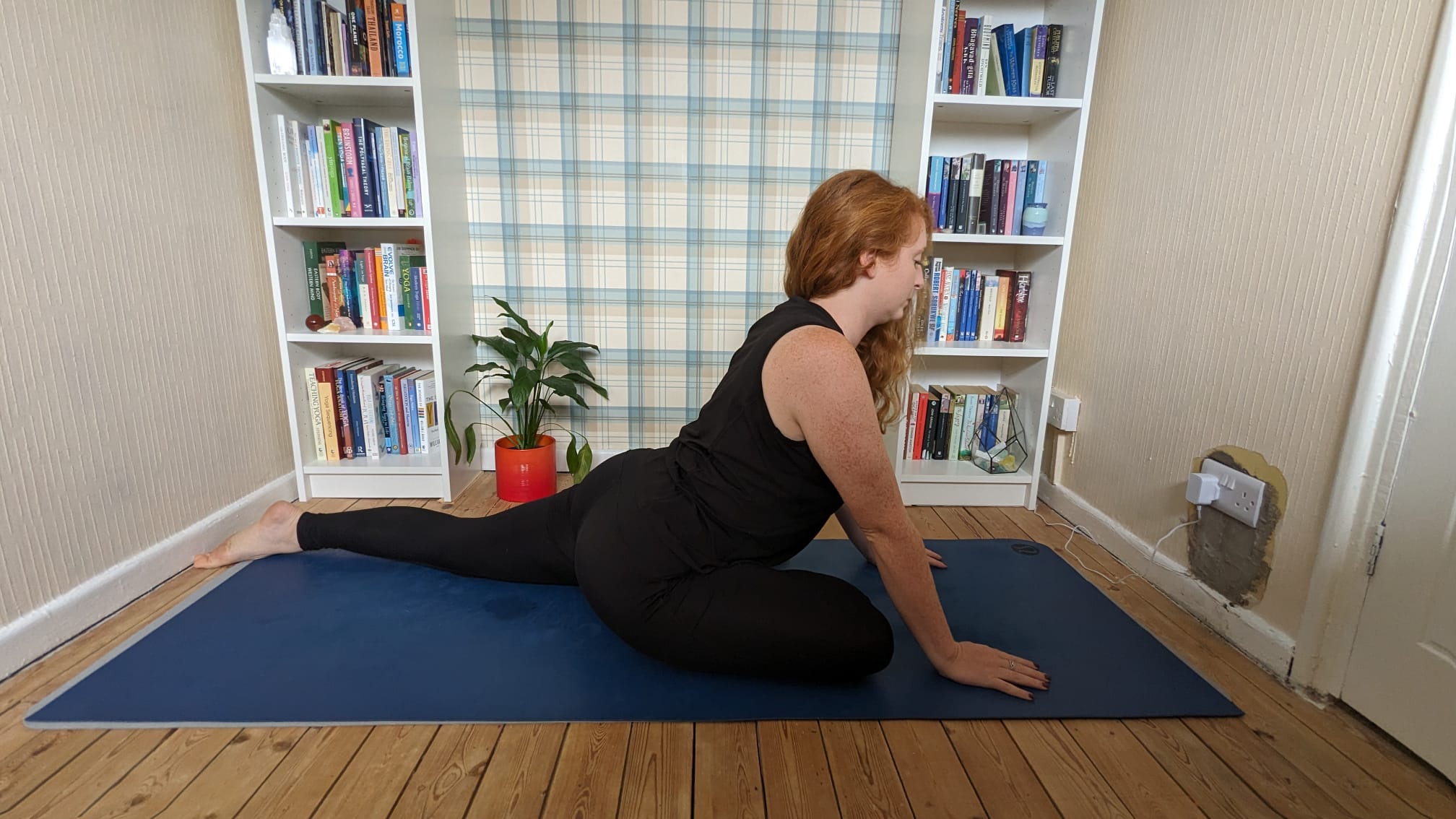
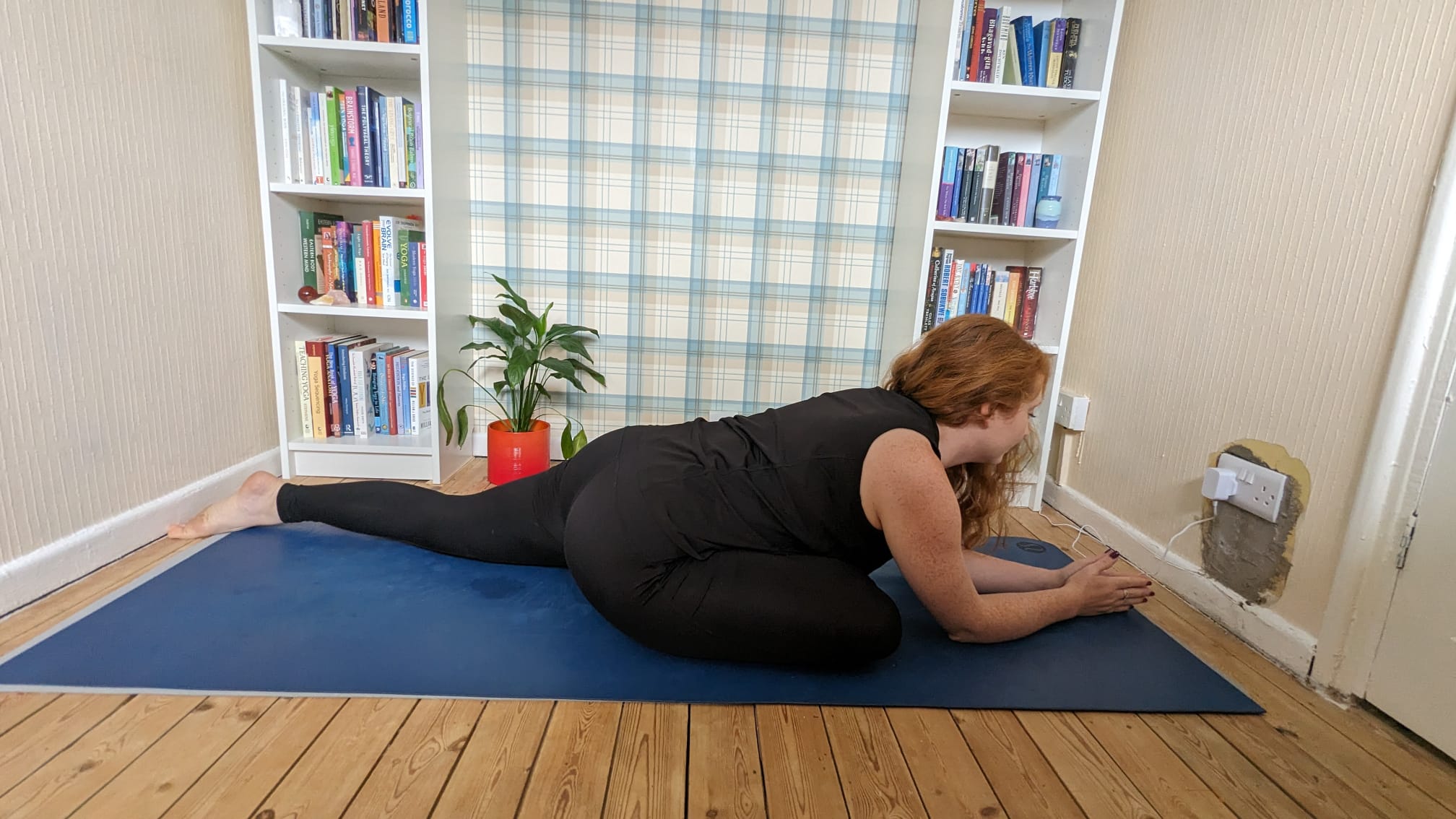
Pigeon pose is a deep hip opener. Within Chinese medicine, it's believed we hold our emotions within the hips. Tight hips, therefore, can signify repressed emotions. This emotional hip release helps control strong emotions and can be beneficial in lifting low mood.
Step 1: From an all fours position, bring your right knee forward towards your right wrist. Let your right heel move towards your left hip.
Step 2: Walk your left leg back so you feel a stretch in the left hip flexor.
Step 3: You can stay on your hands here or lower toward the floor but find a position that you can hold, comfortably, for a number of minutes.
Step 4: Take deep breaths here and surrender towards the floor. Acknowledge and accept anything that comes up here. Stay for two minutes before changing legs and repeating on the other side.
4. Downward facing dog
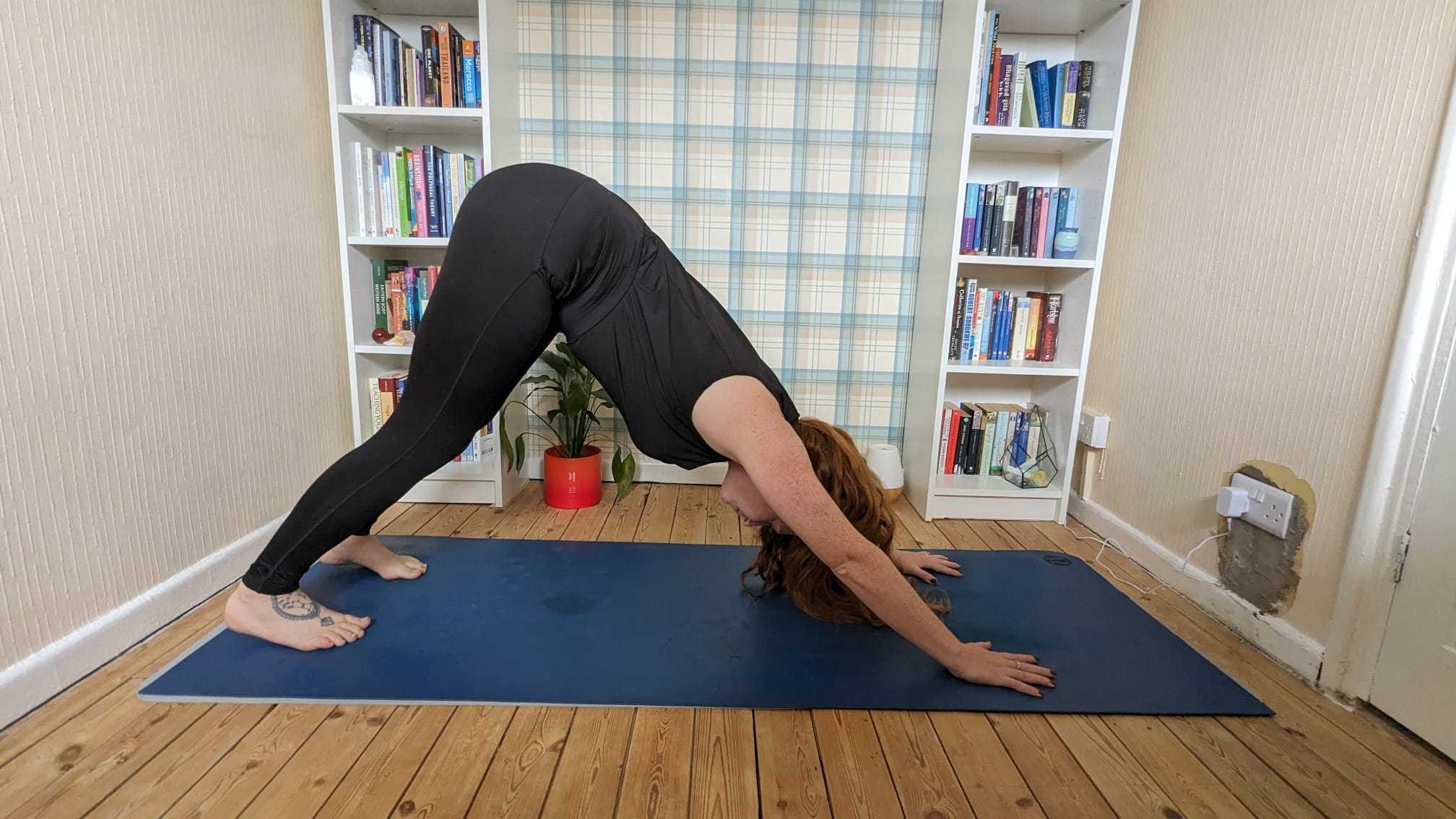
Downward facing dog is a staple yoga posture and is good for the heart with energising effects to improve low mood. It also literally gives you a new perspective by being upside down.
Step 1: From an all fours position, spread your fingers wide and tuck your toes.
Step 2: Inhale and on an exhale, start to lift your knees off the floor, sending your hips up and back.
Step 3: Keeping a bend in the knees, begin to lift your hip bones to the ceiling and fully lengthen your spine. Only if you can keep a straight spine do you want to also straighten the legs.
Step 4: Stay here and work on taking deep, controlled breaths in and out. Exit the posture when you feel ready.
5. Standing wide legged forward bend
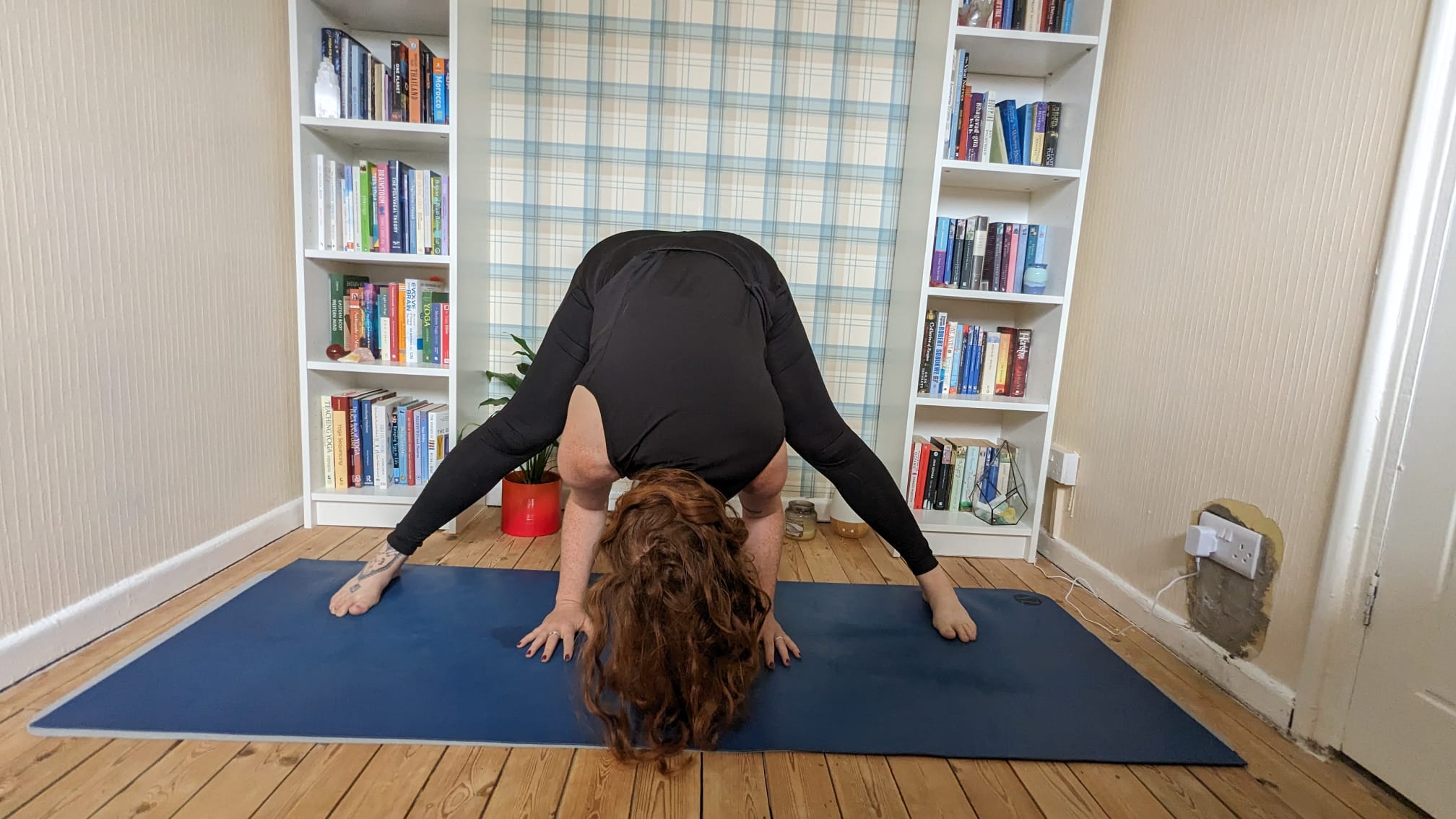
Having lots of thoughts can contribute to low mood as we feel overworked and bombarded. This can lead us to feeling confused and lacking in motivation. Inverting the body with a standing wide legged forward bend has benefits for calming a busy mind and the nervous system.
Step 1: Come to a standing position and step your legs out wide, around a legs distance between the feet will work.
Step 2: Place your hands on your hips and inhale, lift the chest, move your elbows back and look up.
Step 3: On an exhale, start to fold forward keeping the elbows drawing towards each other.
Step 4: Continue folding until you feel you need to release your hands. You can place them on the legs or the floor, wherever you reach without strain.
Step 5: Relax your neck, let your head hang and take three deep breaths before releasing to a standing position.
6. Bridge pose
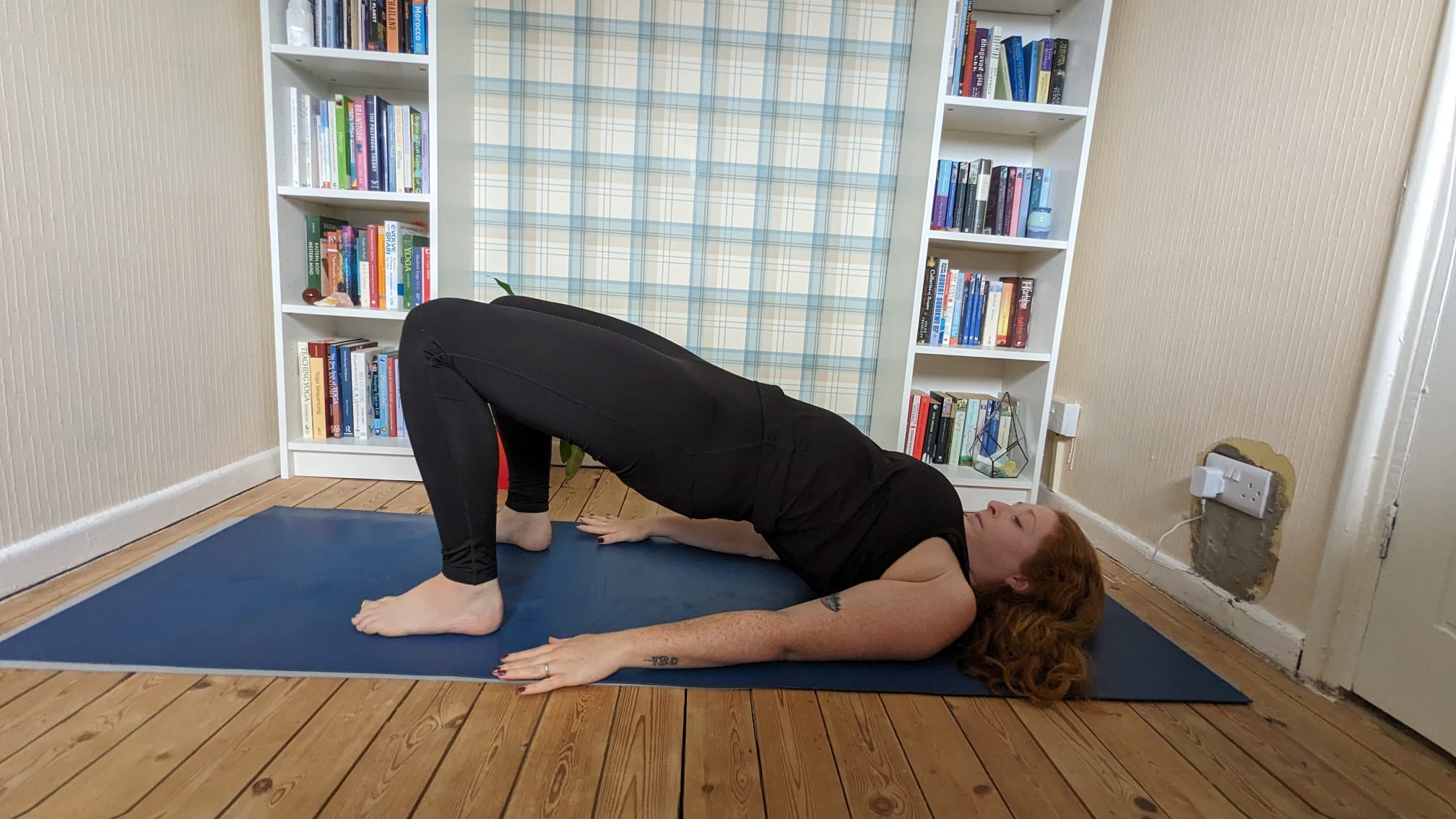
Bridge pose is a heart opening posture which can help change our perspective and be more open. Close this sequence with an open heart so you can go away accepting what may happen after your practice and what you may take away with you.
Step 1: Come to lie on your back and bend your knees, placing your heels around hip distance and close to the buttocks.
Step 2: Bring your arms down next to you and press both your shoulders, upper arms and forearms into the floor.
Step 3: Inhale and on an exhale, lift your hips up while pressing into your arms and feet.
Step 4: Stay here for 3-5 deep breaths, gently coaxing your tailbone away from the floor, lifting the hips higher to deepen your backbend.
Step 5: To release, lower your hips on an exhale. From here, take a few deep breaths lying on your back. Observe your mood before continuing with your day.
Want more yoga flows? Check out this 7-step mindful yoga flow to destress after a long work day.
Kat has 10 years of yoga teaching experience with further training in supporting injured students. She is qualified to teach Yin Yoga, Hormone Yoga Therapy and more traditional forms of Hatha yoga. She also has a certificate as a Yoga Therapy Practitioner.
-
 3 overrated shoulder exercises, according to a fitness expert (and what to do instead)
3 overrated shoulder exercises, according to a fitness expert (and what to do instead)Sculpt 3D shoulders whilst minimising injury with these three alternative exercises
By Bryony Firth-Bernard Published
-
 Polar’s new subscription feature lands in the shadow of Garmin’s Connect+ rollout
Polar’s new subscription feature lands in the shadow of Garmin’s Connect+ rolloutPR genius or timing disaster? Polar’s new Fitness Programme adds adaptive training to its ecosystem
By Matt Kollat Published
-
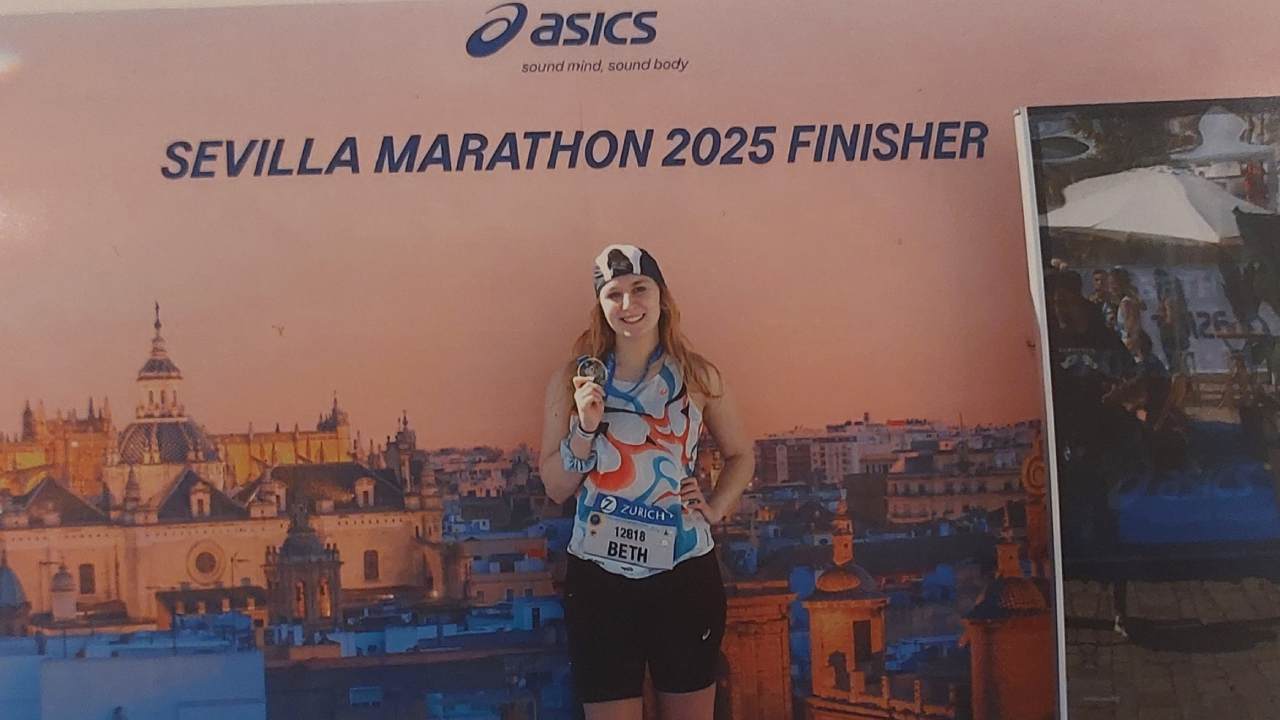 I ran the Seville marathon with ASICS – here’s 5 things I learnt from my first marathon
I ran the Seville marathon with ASICS – here’s 5 things I learnt from my first marathonEverything I learnt from my first marathon
By Bethan Girdler-Maslen Published
-
 This AI food diary app can tell you the nutritional content of your food – with just one photo
This AI food diary app can tell you the nutritional content of your food – with just one photoOh, and it's free to use!
By Lizzie Wilmot Published
-
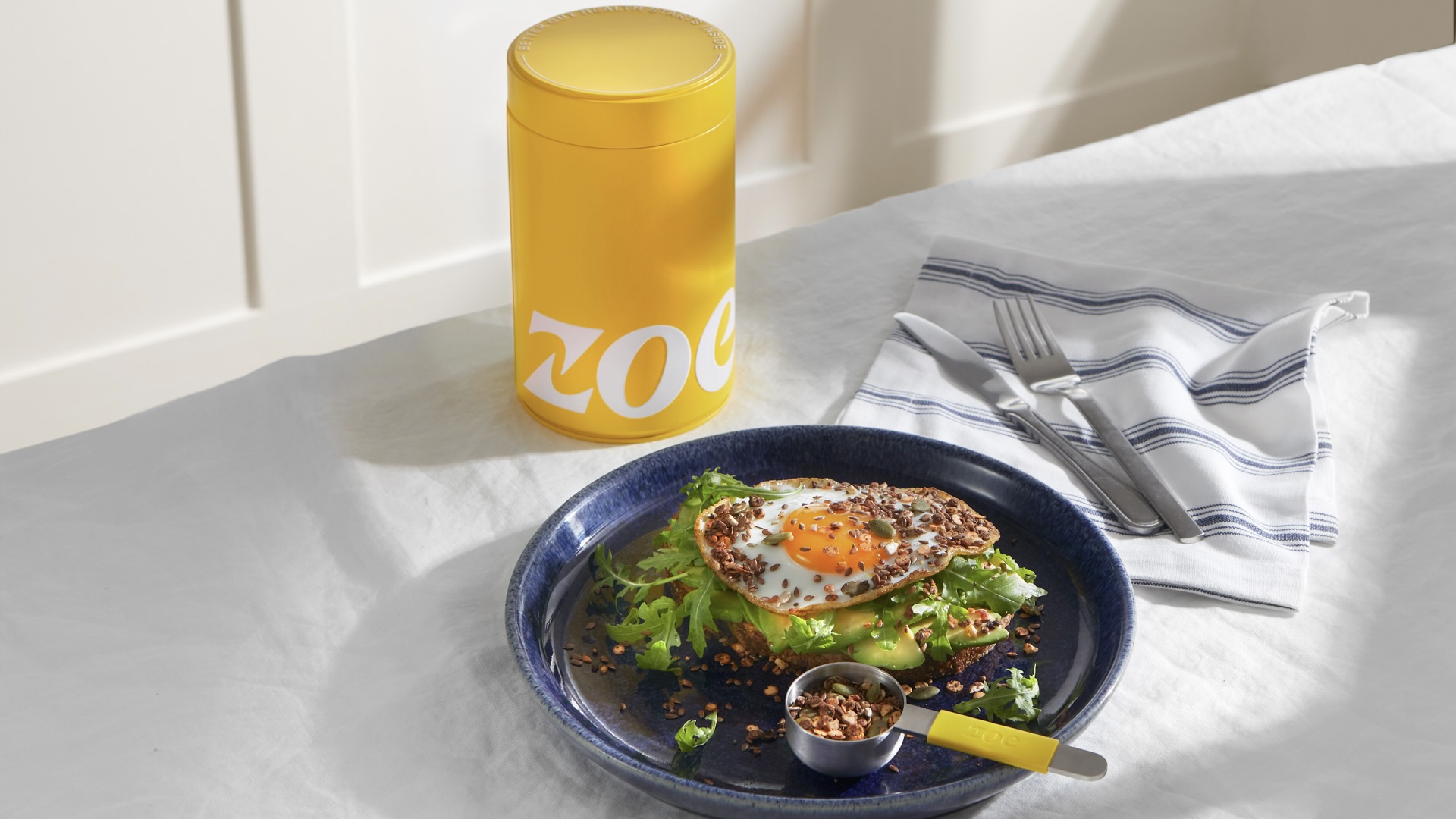 Zoe launches first own-brand supplement on the back of successful nutrition programme
Zoe launches first own-brand supplement on the back of successful nutrition programmeDaily30+ will be available online and in select Waitrose stores later in July
By Lizzie Wilmot Published
-
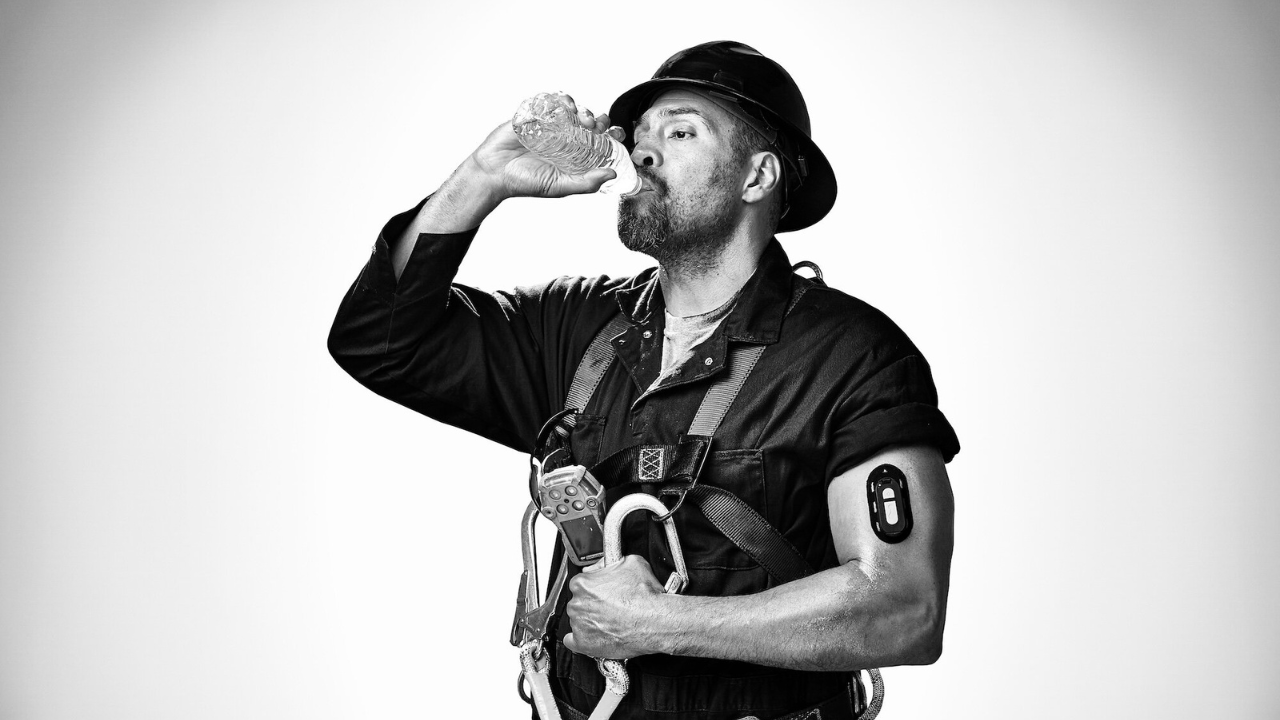 This new wearable monitors your hydration levels and will remind you to drink water
This new wearable monitors your hydration levels and will remind you to drink waterThe world's first real-time hydration monitoring wearable is here
By Lizzie Wilmot Published
-
 I tried the Zoe nutrition programme – it told me exactly what I was doing wrong
I tried the Zoe nutrition programme – it told me exactly what I was doing wrongIf you haven't heard of the Zoe programme, where have you been?
By Lizzie Wilmot Published
-
 Manduka PRO yoga mat review: luxurious, eco-conscious but could have better grip
Manduka PRO yoga mat review: luxurious, eco-conscious but could have better gripA luxurious top-end yoga mat that's almost perfect, apart from its grip... here's T3's Manduka PRO yoga mat review
By Kat Bayly Published
-
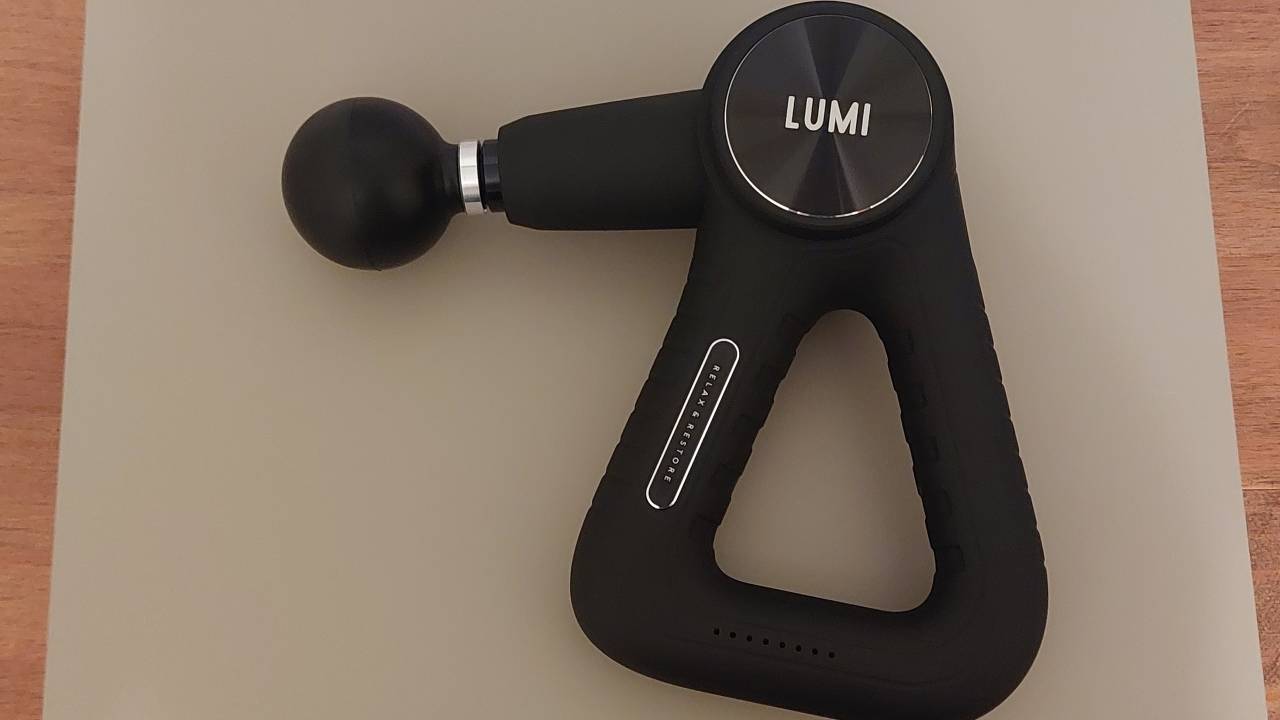 Lumi Therapy powerPRO Massage Gun review: relieves sore muscles in an instant
Lumi Therapy powerPRO Massage Gun review: relieves sore muscles in an instantYour muscles will never feel sore again with the Lumi powerPRO… if you can manage to hold it!
By Bethan Girdler-Maslen Published
-
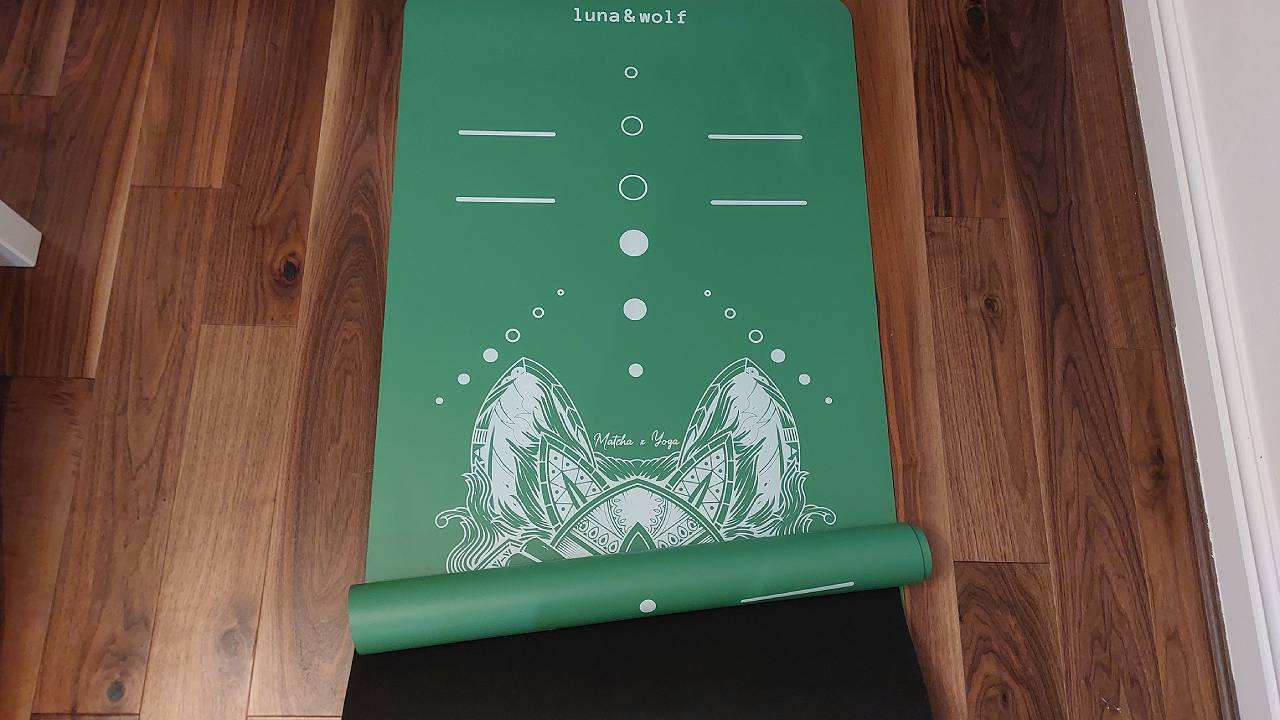 Lumi Therapy Eco Wolf Yoga Mat review: natural, cushioning and sturdy
Lumi Therapy Eco Wolf Yoga Mat review: natural, cushioning and sturdyThe more you sweat, the more the Lumi Therapy Eco Wolf Yoga Mat grips
By Bethan Girdler-Maslen Published